Words Amicia de Moubray Photographs Louise Knight
That an extensive 800 year-old garden is hidden just behind Canterbury’s St. Peter’s Street is, I suspect, virtually unknown to the scores of shoppers and tourists strolling along the bustling thoroughfare.
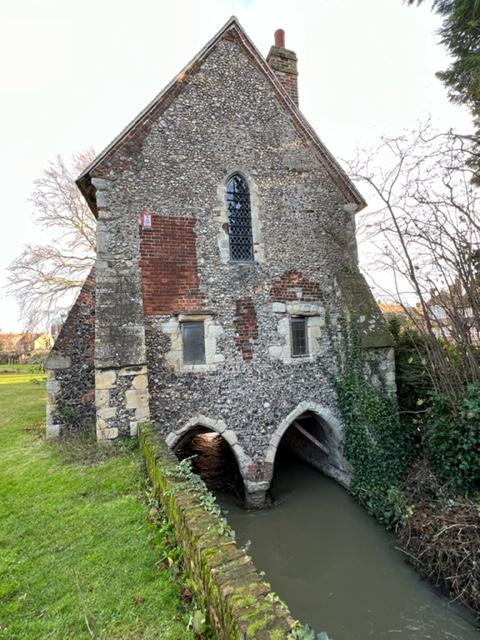
The Greyfriars Chapel built in 1267.
The Franciscan Gardens date from 1224 when the first Franciscan Friars to be sent to England by Francis of Assis, arrived in Canterbury.
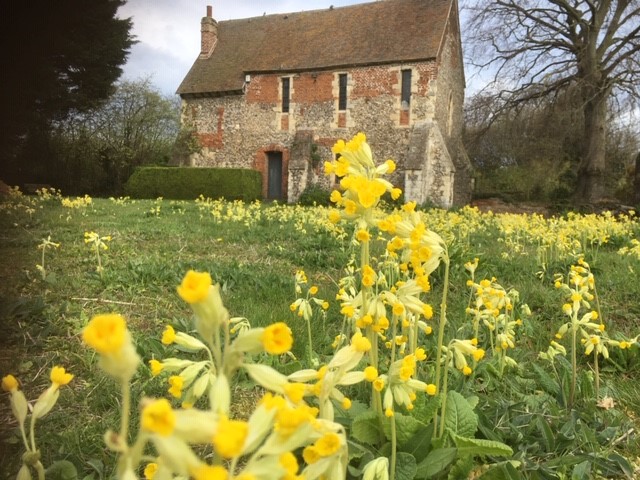
A sea of cowslips
Today the 1.5-acre garden is an oasis of calm and contemplation. It retains a tangible sense of a link to Canterbury’s heyday when it was a thriving centre of European pilgrimage following the murder of Thomas Becket in 1170. It is an astonishing survival. The Greyfriars Chapel built in 1267 probably as sleeping accommodation for the friary, is a notable architectural feature, straddling the Great Stour river.
Since the Friary was dissolved by Henry VIII in 1538 the garden has had a chequered history, passing through a multitude of different owners and uses. For some of the 19th century it operated for a while as a tea garden and for much of the 20th century it was run as a market garden and a commercial garden producing pot plants and cut flowers. In 1958 it was sold to the Dean and Chapter. In 2000 the Eastbridge Hospital of St. Thomas the Martyr, another ancient survival from the medieval era, purchased the gardens.
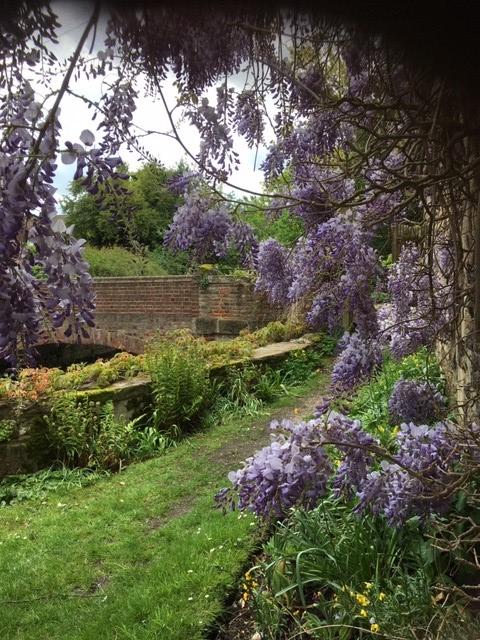
An ancient wisteria in full bloom. Just one of the many delights of the Franciscan Gardens
The gardens have been open to the public for the last ten years but have recently undergone an extensive renovation. The enforced lockdowns provided the perfect opportunity for an overhaul by the two full time and one-part time gardeners. The garden was in a woeful state but has been lovingly restored incorporating as far as possible plants that the original Franciscans would recognise. It is organically gardened with great emphasis on attracting wildlife to promote biodiversity. It is a haven in the middle of a city.
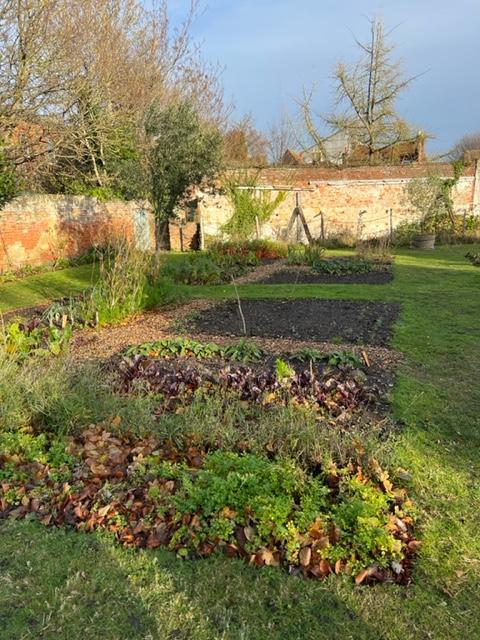
The cutting garden is well stocked with a variety of medicinal plants
Of course, in those far off days the friars would have relied on many plants for their medicinal properties. The newly established cutting garden is planted with a few of them and educationally sports a blackboard explaining the uses of plants such as yarrow and mint.
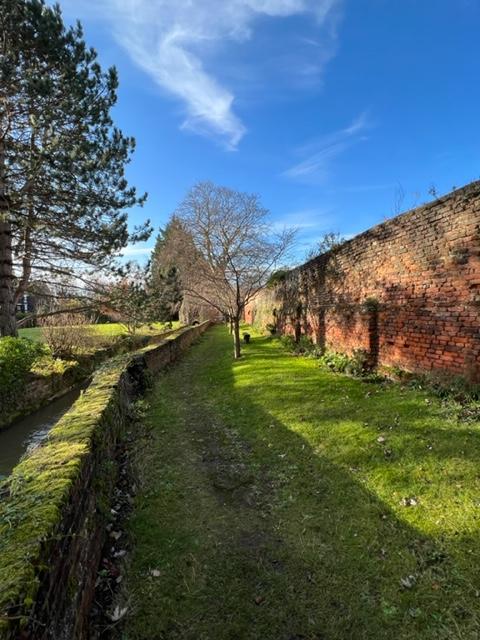
The snowdrop walk photographed in December before snowdrops have appeared
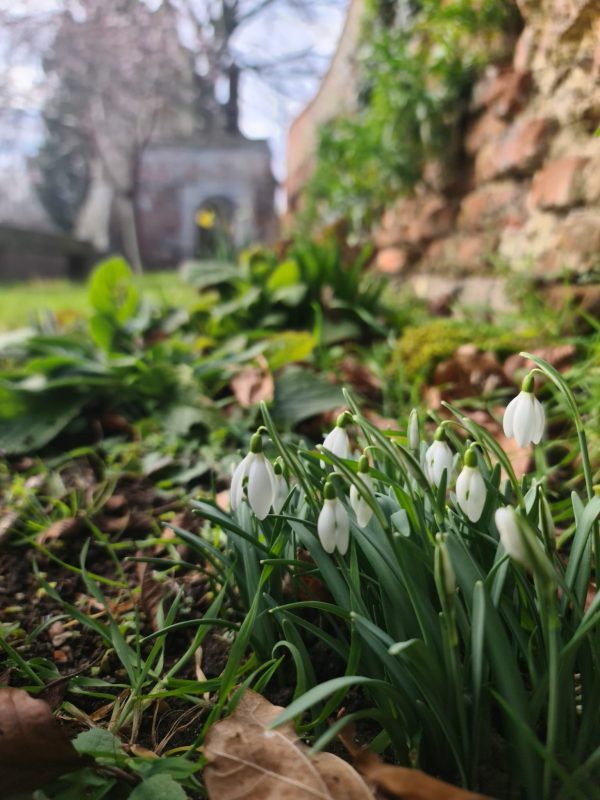
Snowdrops photographed a few days ago.
Throughout the garden other plants have been chosen for their religious symbolism. The snowdrop walk symbolises the resurrection and hope, newly planted with thousands of bulbs along the river bank. Dotted around are Aquilegia vulgaris, representing the Holy Spirit, Rosa Gallica, depicting Mary and Christ and Vinca Minor which traditionally represents Christ’s death. There is also a small section brimming with plants traditionally used for making natural dyes for fabrics.
In the summer the wildflower meadow recently planted with fruit trees of old varieties is a spectacular vision.
The old glasshouses of a once commercial cut flower nursey have long gone but a handsome Victorian Vinery housing a vine believed to have come from Hampton Court is awaiting restoration, once the necessary funds have been raised.
To wander around the garden is a delight whatever the time of year. Do visit. You won’t be disappointed.
Online booking is recommended.
Monday-Sunday 10am-5pm.